They say absence makes the heart grow fonder, but when it comes to TV, sometimes absence makes the storyline stronger. Whether it’s a sudden death, a dramatic exit, or a behind-the-scenes fallout, losing a main character can feel like the end of the world for fans. At least until the show returns, and it’s better than ever. From awkward reboots to killer plot twists, some series find unexpected freedom in the void left behind.
New characters step up, writers take bold risks, and storylines shift into high gear. And suddenly, the show you thought peaked in season two is now must-watch TV. This list is a love letter to those glow-up seasons, to the shows that said goodbye to big names and came back stronger, sharper, and surprisingly more bingeable. Ready to relive some iconic shake-ups that saved storylines? Let’s get into the top 10 TV shows that got better after a main character left the set forever.
Disclaimer: This article reflects the writer's opinion. Reader's discretion is advised.
The Doctor in Doctor Who
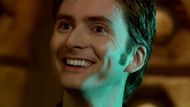
In most TV shows, the departure of the lead actor is nothing short of a death knell. However, in Doctor Who, it’s a feature, not a bug. Our favorite dual-hearted alien Time Lord has been played by no fewer than fifteen actors across twenty-six seasons, thanks to the show's brilliant narrative loophole of regeneration. Doctor Who, the main protagonist, is a 2000-year-old time traveler and can regenerate if killed, provided he changes his appearance each time. This is a highly compelling method of storytelling, as a new lead every season brings new plotlines more organically without the risk of burnout, and every new Doctor has brought something new to this mysterious, multifaceted character.
From Christopher Eccleston's brooding, post-war action sequences to David Tennant's cheeky demeanor and frantic energy, which transformed the show into a pop culture supernova, with each exit, the show evolved, getting stronger, leaner, and more narratively adventurous. The Doctor's leaving isn't an ending, but a new beginning. And sometimes, the show finds nuanced emotional depth only after saying goodbye to an old face.
Freddie in Peaky Blinders

From Political Preacher to Gangster Godfather, Freddie Thorne (Iddo Goldberg) was always the odd man out in Peaky Blinders. A passionate communist and proud revolutionary, Freddie was the ideological foil to Thomas Shelby (Cillian Murphy), a man building an empire out of crime and charisma. However, their tension was never fully ignited and explored on-screen. Freddie’s romance with Ada Shelby (Sophie Rundle) was a solid and convincing plot point, but he never quite fit the series’ razor-sharp aesthetic and gritty realism.
Being too noble in a world of morally murky anti-heroes. His early departure and an implied off-screen death by influenza, between Seasons 1 and 2, freed the show from a sub-par storyline. With Freddie gone, the Peaky universe opened up, with Thomas Shelby’s arc taking center stage. Haunted, ambitious, and Shakespearean in its 'tragedy', the audience saw deeper power plays, stronger, more volatile romances, and larger, unrelenting enemies, kicking off the show into high gear.
Hawkgirl & Hawkman in Legends of Tomorrow

The very first season, Legends of Tomorrow had two very big and ancient problems, namely Kendra Saunders aka Hawkgirl (Ciara Renée) and Carter Hall aka Hawkman (Falk Hentschel). Rooted in ancient Egyptian curses, endless reincarnation, and fate-bound romances, their storyline felt more forced than fated. Even though the actors did their best, the restrictive script weighed them down with stiff dialogue and generic plot devices. Their characters were poorly written, and even though they were set at the center of the first season of the show, fans did not connect with them.
More intrigued by the wacky camaraderie between Sara Lance (Caity Lotz), Mick Rory (Dominic Purcell), and Ray Palmer (Brandon Routh), and their time-traveling hijinks, the show runner's decision to reduce the cast and remove the winged duo was the right one, and at the end of Season 1, the series breathed a sigh of relief. Season 2 of Legends of Tomorrow embraced the bizarre and the hilarious, as the show stopped trying to be a CW superhero drama and transformed into a chaotic, heartfelt, time-hopping adventure comedy. The whimsical atmosphere the show developed after its shaky first season became the hallmark of this fan favorite cult-classic.
Shane Walsh in The Walking Dead

Shane Walsh (Jon Bernthal) was the show's ticking time bomb. He was volatile, brooding, and always seconds from exploding. In the early seasons of The Walking Dead, Shane was Rick Grimes’ (Andrew Lincoln) best friend turned bitter rival, after falling for Rick’s wife, Lori (Sarah Wayne Callies), during the apocalypse. By Season 2, however, Shane was spiraling. Having shaved his head, snapping at everyone a few too many times, and delivering clichéd lines like “You can't just be the good guy and expect to live, not anymore.” He was slowly losing the edge that made him both ferocious and, at the same time, endearing.
When Rick finally stabbed Shane in the chest in a moonlit field, and then the latter reanimated as a walker later, it was a Shakespearean climax, brother against brother, loyalty against survival. This changed everything. With Shane gone, the show stopped being a personal feud and became a survival epic. The focus widened, and more compelling villains appeared. Many of the fan favorite characters got more elaborate arcs, with the mysterious character of Michonne debuting on-screen like a katana-wielding myth. Shane’s death was the catalyst that sharpened Rick and reshaped the group. It proved that The Walking Dead could evolve beyond a single conflict and keep walking forward.
Ned Stark in Game Of Thrones
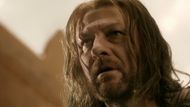
As Eddard Stark (Sean Bean) knelt before the Iron Throne, audiences assumed that this character was here to stay. He was wise and nobler than any other 'lord' or 'king' on the show. Viewers, hence, were left horrified after witnessing the gut-wrenching execution scene of Eddard Stark at the climax of the very first season of the renowned show. And just like that, the tone of the show shifted. Yes, it was stern in its gruesome portrayal of the realities of medieval politics, but this was too soon, too close to home, and exactly what the show did right.
Up until the point of Ned’s death, Game of Thrones felt like traditional fantasy, a good man trying to navigate a corrupt world. But as King Joffrey's (Jack Gleeson) folly and recklessness came to the forefront for all to see, the show proved it was playing a different game entirely. Tyrion Lannister (Peter Dinklage) stepped into prominence, Daenerys Targaryen (Emilia Clarke) began her fiery ascent as the Mother of Dragons, and the Stark children scattered and grew into legends. Ned was the heart. But his removal let the blood flow to every corner of Westeros.
Mark in Parks And Recreation
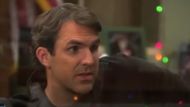
In the early days of Parks and Recreation, the sitcom had a slightly awkward, stilted kind of vibe, as if it were still deciding whether it wanted to be a workplace Office about a small town, or more of a mockumentary about something completely different. Its beating heart of uncertainty was Mark Brendanawicz, the Pawnee city planner played by Paul Schneider. Mark was the straight man to Leslie Knope’s hyper-enthusiasm, a practical realist who injected a dose of rational thought into Pawnee’s lovable absurdity. But let’s be honest. Mark was kind of a drag. He had all the charm of a beige couch, and the romantic tension of a five-day-old flat soda. The on-again, off-again flirtation he had with Leslie (Amy Poehler) seemed lukewarm at best, and his thing with Ann Perkins (Rashida Jones) was similarly sparkless.
His exit following the Season 2 finale, a consequence of making a career switch and gradually losing interest in city politics, didn’t even merit a dramatic send-off. But that’s when the show truly bloomed. With Mark out of the picture, the writers leaned into the quirky ensemble that would define the series. Enter Ben Wyatt (Adam Scott) and Chris Traeger (Rob Lowe), whose chemistry with the existing cast turbocharged the show's humor and heart. Ben and Leslie’s slow-burn romance had all the elements Mark could never bring. And perhaps most importantly, without Mark’s generic everyman persona soaking up screen time, the supporting cast flourished. Ron Swanson (Nick Offerman), Tom Haverford (Aziz Ansari), April Ludgate (Aubrey Plaza), and Andy Dwyer (Chris Pratt) were allowed to go full Pawnee, giving the show its signature tone of absurdity laced with warmth. Paul Schneider later told Vulture, “That experience was very strange for me”. With Mark gone, Parks and Recreation became the small-town utopia we still binge for comfort.
Will Gardner in The Good Wife

When Josh Charles’ Will Gardner was unexpectedly shot dead in Season 5 of The Good Wife. Viewers had their breath taken away, and were left traumatized in some dark space of their mind. Horrified but also riveted. Will was not only a significant character, but her co-founder in the law firm where she worked, a confidant, her lover, and the show’s emotional center. But the character’s dramatic death in court, at the hands of an unhinged client, sent shockwaves through the show and, counterintuitively, squeezed the drama tighter. In the showrunners Robert and Michelle King’s words, it was a turning point. “It was about Alicia’s metamorphosis,” they said in a post-mortem interview. “We always had this idea of this moment where she was going to be forced to face herself without Will.” And what a transformation it was. Alicia was cracked open by Will’s death.
No longer was there the quietly brooding lawyer who was in romantic limbo. In her stead emerged a new Alicia, more hardened, more ruthless, one who would test the moral compass that had guided her for so long. Seasons 6 and 7 explored Alicia's descent (and rise) as she tried to rebuild her life without the man she loved. We saw her break free from the orbit of Lockhart/Gardner, run for State’s Attorney, and clash with Diane Lockhart (Christine Baranski). The writing became sharper, darker. And Alicia, always a master of composure, began to unravel in the most compelling ways. Josh Charles himself admitted he wanted off the show, but added, “The way they wrote me out… I couldn’t have asked for better.” In a way, Will’s death gave The Good Wife its most honest and harrowing storyline. One that couldn’t have happened with him still alive.
Allen Doyle in Angel
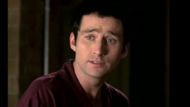
The original heart of Angel was Glenn Quinn’s Allen Doyle. Portrayed as a half-demon with a heart of gold and a taste for self-deprecating Irish humor, Doyle conferred Angel (David Boreanaz) with his “mission” to help the helpless. On a series shot in tones of gray, Doyle was the comic relief and the emotional spine. But then, just nine episodes in, Doyle redeemed himself in “Hero,” a classic episode that still leaves fans misty-eyed. He rescued a boatload of half-demons from extermination and thereby transferred his visions to Cordelia Chase (Charisma Carpenter).
“Too bad we’ll never know if this is a face you could learn to love,” he said, before evaporating in a flash of white light.
It was poetic. Tragic. Bittersweet. And it allowed Angel to grow into something greater. Wesley Wyndam-Pryce (Alexis Denisof) then joined the team after Doyle’s departure. First, a bumbling ex-Watcher, Wesley matured throughout the series into one of the most tragic, complex characters in the Buffyverse. Rick’s arc from coward to hero, from jokester to morally conflicted leader, would never have happened with Doyle remaining in the mix. Glenn Quinn’s off-screen struggles led to his departure, but the show’s turn toward darker, serialized storytelling soon followed. Doyle’s death wasn’t only an emotional gut-punch; it was narrative permission for the show to go heavier, mythologizing, and more ambitious.
Owen Harper and Toshiko Sato in Torchwood
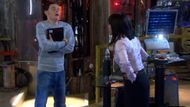
Few shows play with emotional trauma the way Torchwood does. The Doctor Who spin-off was never afraid to kill off main characters, but the deaths of Owen Harper (Burn Gorman) and Toshiko Sato (Naoko Mori) at the end of Season 2 hit particularly hard. Owen was the morbid, often cynical doctor, and Toshiko, the gentle tech genius. They had a poignant, unspoken bond, and in the episode “Exit Wounds,” they die minutes apart, each unable to save the other. “I was hoping I’d get the chance to say it,” Tosh whispers through a comm link. “Say what?” Owen asks. She hesitates. “Nothing.” It was devastating. However, despite their crushing goodbyes, their deaths forced Torchwood into a bold reinvention.
Season 3, Children of Earth, is widely regarded as the show's high point. A five-episode arc that shifted the focus to political intrigue, government corruption, and one of the bleakest alien encounters in sci-fi television. With just Captain Jack Harkness (John Barrowman), Gwen Cooper (Eve Myles), and a skeleton crew, the show shed its monster-of-the-week format for something tighter, darker, and more cinematic. Without Owen and Tosh, the emotional stakes rose. Jack’s decisions carried more weight, and Gwen became the show's emotional center, balancing her maternal instincts with her growing ruthlessness. The show became less about gadgets and team dynamics and more about moral consequences. Now Torchwood wasn’t just about the weird, it was about what it cost to face it.
Josephus Miller in The Expanse

Josephus Miller (Thomas Jane), the fedora-wearing, noir-tinged detective of The Expanse, was the soul of the first season. A Belter with a cause, Miller’s obsession with the missing Julie Mao gave the early episodes their central mystery and thematic weight. He was a hard-boiled antihero in space, muttering lines like, “She’s the only thing that makes me feel like I’m not broken.”
However, when Miller and Julie met their fate together in the protomolecule-infested depths of Eros Station, their deaths did something unexpected, freeing the narrative. Miller’s death marked a tectonic shift. The plot zoomed out from noir mystery to galaxy-spanning epic. No longer anchored by one man’s personal quest, the show became an intricate web of politics, warfare, diplomacy, and science fiction grandeur. Earth, Mars, and the Belt began to feel like real geopolitical entities, complete with their own agendas and moral ambiguities. Miller’s exit was the end of a chapter, but also the show’s true beginning as a sweeping space opera.
